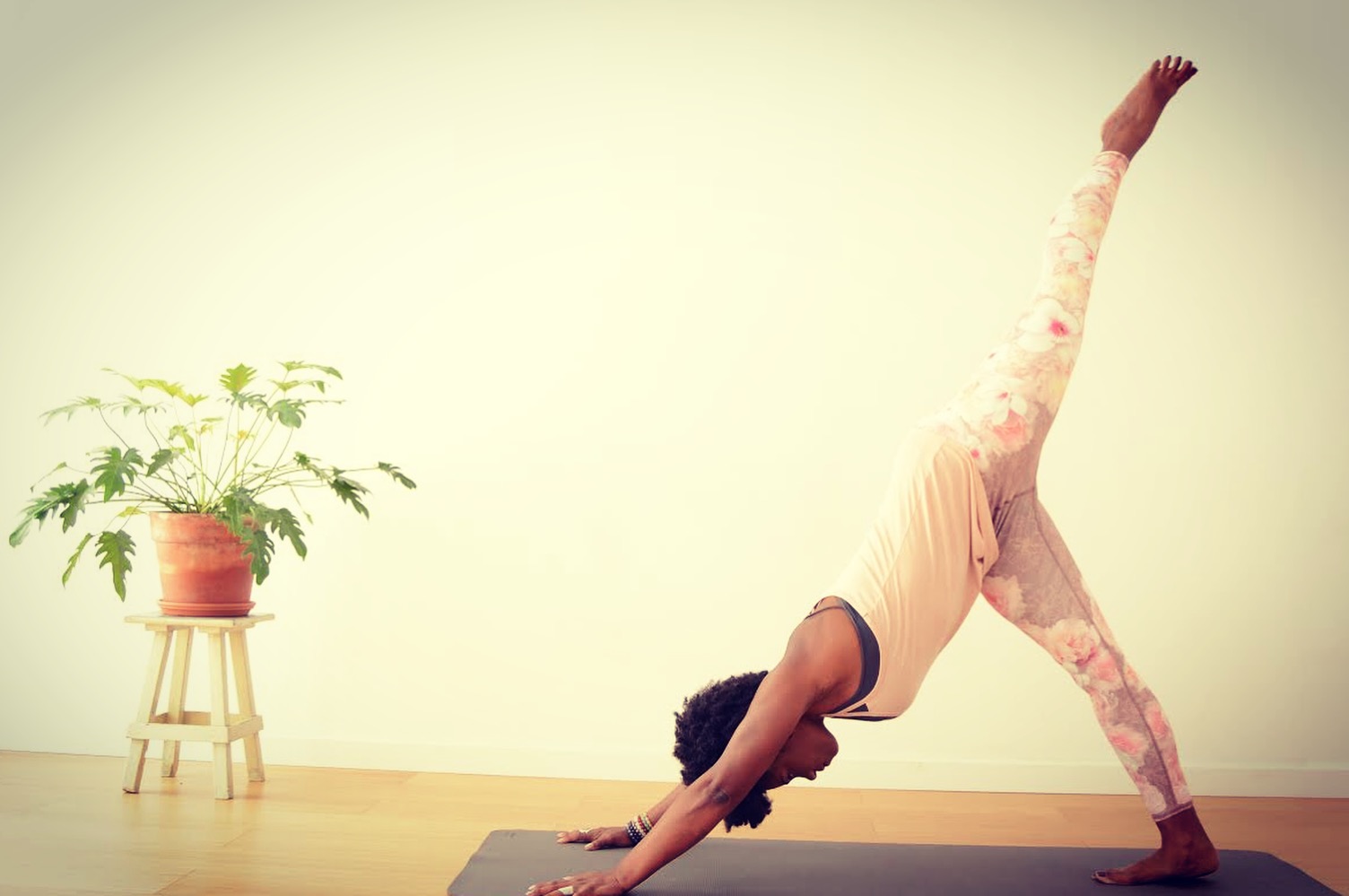This week was the first in many years when I had a sleepless night. I woke from sleep in a fit of anxiety and spent the remaining three hours until dawn tossing and turning, ruminating about three events from the week which stung my heart and catapulted me into seemingly uncontrollable worry: the mass shooting at The Tree of Life synagogue in Pittsburgh, the evacuation of my gym in the Time Warner Center due to explosive devices that were sent to 16 different presidential administration critics including CNN, and finally, the deja vu-like election of a new president of Brazil whose words and promises are racist, homophobic, misogynist, and promote violence. As luck would have it, it was a Sunday night, and that following morning I had to head across town to teach and inspire a bunch of adolescents. I didn’t feel like it. I was tired. I was heartbroken. Yet I had to make my coffee, feed myself, and do what it takes to support our children.
My morning ritual of nourishing and preparing myself for the day almost always includes yoga and meditation. And on this morning, I practiced loving kindness meditation with the violent and mentally ill perpetrators who were on my mind from the night prior. If there is one thing that I know well by now in life, it is that hurt people hurt. During my practice, my mind took me to a place where I could perceive deep wells of suffering in these men rather than merely see the evil in their deeds. Though far from an easy practice, loving kindness required that I remain open to the possibility that I could change my own physical and mental landscape, even if the reality of the compelling “wrongness” of the facts of recent events could not be erased. Surprisingly, loving kindness meditation left me feeling lighter, and at the very least I could now think more clearly about the best way to use yoga and mindfulness as tools to support my students.
I chose to incorporate a mindful listening practice into the my classes that day so my high school students might be free to share what was on their own minds in light of the daily barrage of polarizing and aggressive acts that loom like a specter in the air and in the back of all our minds. What can we do when the things we fear the most are unpredictable events that happen far away or to others, yet still violate our personal sense of safety nonetheless? What do we do when our political leadership demonstrate horrific discernment and no intention of creating equitable policy that ensures access for all to resources? How do we trust law enforcement that are often terrible role models for compassionate practices that might encourage abiding harmoniously in community? What can we do when there doesn’t seem to be anyone to call who can make the “boogeymen” and the very real but merely looming dangers go away? One thing I won’t do to insult my students’ intelligence and highly perceptive capacity for sensing hypocrisy and danger: pretend that these very real boogeymen of our time do not exist.
When I finally got to my school, I opened my class that morning with some nurturing asana, a short mindful breathing exercise and a practice of labeling thoughts, to notice the quality of thoughts might be tugging away at my students ability to focus on the breath. Then we explored the mindful communication practice that dovetailed beautifully with our current unit on compassion. The guiding question for the lesson that I asked them to marinate with: Is mindful listening an act of compassion? The prompts I used were drawn from my own experiences and practices that weekend: 1) What keeps you up at night? 2) Who can you talk to that truly listens to you? 3)Who are the people in your life that make you feel safe? I facilitated the practice so that person A answered the question for a full two minutes, while person B simply listened without talking in response at all, and then they switched for each question upon the ringing of the singing bowl. If you’ve never done a mindful listening activity before, it is notable how rigorously challenging it is for your average teenager, who thrives on social engagement, to just sit and listen to a peer without responding verbally. For that matter, our current times reflect how extremely difficult it is for adults to simply listen and hold space for the experiences and views of others, too.
The debrief of the activity was rich. One student shared that though he continually found it hard to fight his impulse to speak in response to something said by his partner, he confessed, “I think I have never in my entire life actually listened to anyone. I think I’m always just waiting for my turn to speak.” Another student shared how surprised she was to discover that there was so much she’d never known about a classmate, despite being in class together since kindergarten. “I wondered,” she said, “if I don’t know him as well because I hadn’t been listening before, or if I just never gave him a chance to talk and be heard.” Most of my students that day shared that they found it easiest to talk than simply listen, and that their impulse to speak was usually to affirm or demonstrate a connection to what their partner was saying. They expressed feeling neglectful while unable to speak words indicating they understand or could relate to their partner. When I asked them to reflect on the ways that they did find to connect since talking wasn’t aloud, they shared things like sighing, or touching a knee or hand. I asked them to consider why our habitual choice for demonstrating connection seems to be verbal when there are so many ways to find connection to others.
Because I had an odd number of students in my class that day, I also had a partner for mindful listening practice. I was struck when my student shared that what was keeping him up at night was his science teacher, and how he knew that she hated him because of the unusually mean way she had been treating him since the year prior. He shared details as evidence. While he spoke about whether it was wise to finally confront her or not and his anxiety about it, I felt a wide pool sorrow open up right in the center of my heart. I imagined the sense of hurt, frustration, and powerlessness this child felt in a setting where he should feel safe and be treated with kindness. I noted how hard it must be for him to actually learn science under such circumstances. In the moments as I listened I spontaneously let out a soft, sigh-like “Ohhh,” sound. And noted in my mind, that what was occurring within me was empathy. I observed myself becoming a protective ally for my student, desiring to shelter him from the harm caused by this teacher by offering tools to support himself. I looked around the room and could see and feel a similar shift occurring for everyone. It was love and empathy in action.
What truly touched me, in light of the violent polarizing acts that had filled me with anxiety the night before, was the response I got when I repeated my guiding question at the end of class: “So everyone, what do you think: Is mindful listening an act of compassion?”
“Absolutely,” a student remarked. “It is very hard to hurt someone that you feel connected to.” Full stop.
My students and their capacity to consider the experiences of others by simply listening soothed my anxiety about current events, reminding me of the inherent resilience that all humans have in the face of challenging times. Experiencing mindful listening with them offered a notable antidote to the harm being caused simultaneously in our world whenever people chose not to listen, chose not to connect and consider the validity of another’s experience. Truly listening to others requires acknowledging that our brains are wired to recognize only what is familiar. The latest neuroscience research reveals that we have an evolutionary bias against people and circumstances that are not like our own. Yet through intentional learning and practice, we are capable of a much higher expression of human existence. It seems that if we would prefer not to destroy ourselves and our planet, the time to learn to listen, to learn compassion, and to learn to connect to more fully to others is now.
Quite unexpectedly, the events that caused my topsy turvy night yielded a beautiful day of learning with my students. Our yoga and mindfulness practices fulfilled my professional intentions as an educator: to foster love and connection among my students, and with the larger world around them so that they might experience empathy, use gentler words, and take more compassionate action with others.

